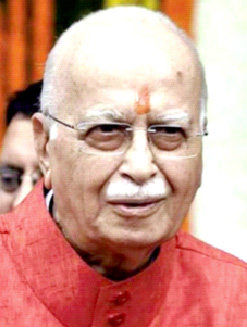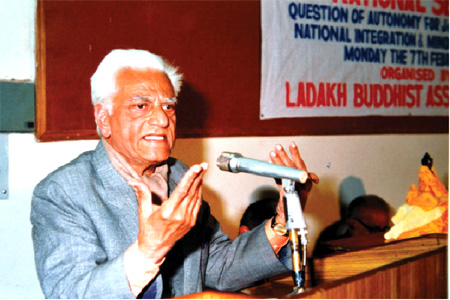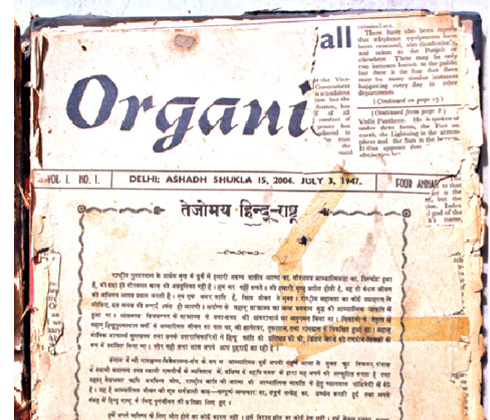Generally, the Rashtriya Swayamsevak Sangh and its Swayamsevaks are not very publicity savvy. Therefore, starting a media group and that also in English was a courageous move in 1946-47 when Bharat Prakashan (Delhi) Limited was formed with the contribution of thousands of shareholders. Though the idea Organiser as voice of Bharatiyata and Bharatiya point of view on various issues germinated well before the Independence, yet it could be materialised only few weeks before the Independence.

One such group was led by a young and dynamic pracharak, Vasantrao Oak who was the main strategist behind this move. Along with him Devendra Vijay Dadhwal, editor of a Hindi journal “Dainik Bharatvarsha”, Amarnath Bajaj and Chaithram, both government employees supported this idea. Lala Charat Ram of Delhi Cloth Mills (DCM) was also a great support in this endeavour. The inspiration behind this move was that of the stalwarts like Pt. Deendayal Upadhyaya and Shri Madhavrao Mulye. The famous Latifi Press which was printing DAWN till Partition became first printing press for Organiser also, eventually after Independence that was bought over and was made into Hindustan Press. Sri Guruji himself was instrumental in this process.

Ironically, the first copy of ORGANISER was put in place with Shri A. R. Nair as Editor who was not from the RSS school of thought but more known for his tilt towards Marxism. As it was decided not to wear Hindutva tag while being in the media business, as suggested by none other than the then RSS Sarsanghachalak Sri Guruji, Shri Nair was the choice for his superior editing and linguistic skills in English.
Undoubtedly, providing the space to the alternative voices that were pushed to the periphery by the ecosystem created by Congress-Communist alliance in the post-Independent Bharat was one of the key objectives of the publication. On the positive side, it also meant to recontexualise the traditional roots of nationhood on the strong edifice of civilisational ethos for which our forefathers fought against the external aggressions.

Though the journey had begun in 1946 itself with a formation of Bharat Prakashan Delhi Limited, a company with sixteen thousand share holders, the first edition actually hit the market on August 14, 1947. Organiser experienced the first stumbling block after the brutal assassination of Mahatma Gandhi. The ban on RSS with nefarious designs forced the fledgling weekly to close down within six months of its beginning. After the unconditional lifting of the ban on the RSS, among many things that resumed normal activity was Organiser. This time, Kewal Ratan Malkani, another experienced journalist, then working with Hindustan Times, was called in to edit the weekly. KR Malkani soon became the face of the weekly and edited the weekly from 1948 to 1982, for thirty four long years. During his stay away in England on fellowship, the weekly was edited by one of its sub-editors and a “film correspondent” Lal Krishna Advani.
Another important hurdle occurred in the smooth publication within a month of enactment of the Constitution of Bharat. Amidst the atmosphere of calls to war with Pakistan and violence against Hindus in West Bengal and Pakistan, the Organiser published a front-page article entitled “Six Questions” on February 27, 1950, that was followed by series of articles exposing the brutalities against Hindus by the Muslims having links with Muslim League.
The then Congress Government used the iron hand to curb the reporting on these sensitive issues and KR Malkani was called to explain himself to the Central Press Advisory Committee which he again protested through an editorial calling it ‘official acts of harassment’. This led to the imposition of censorship which was challenged in the Supreme Court by Organiser on April 17, 1950. On June 5, finally the Court had declared the relevant section of the East Punjab Public Safety Act unconstitutional which was described by Organiser “A Great Event”.
There was another break imposed on the publication during the Emergency in 1975 for exposing the political manipulations, corruption and blatant abuse of power by the establishment. Still, the revival was made possible after difficult times with the support of masses.
Despite the incessant efforts to scuttle the voice of the nationalist weekly, since 1947, it has stood for the core values of journalism for nation and has continued its journey to organise the society and
thought process for the national reconstruction. Therefore, the post-Independent journey of Bharat is inseparable from the constant march of Organiser.




















Comments